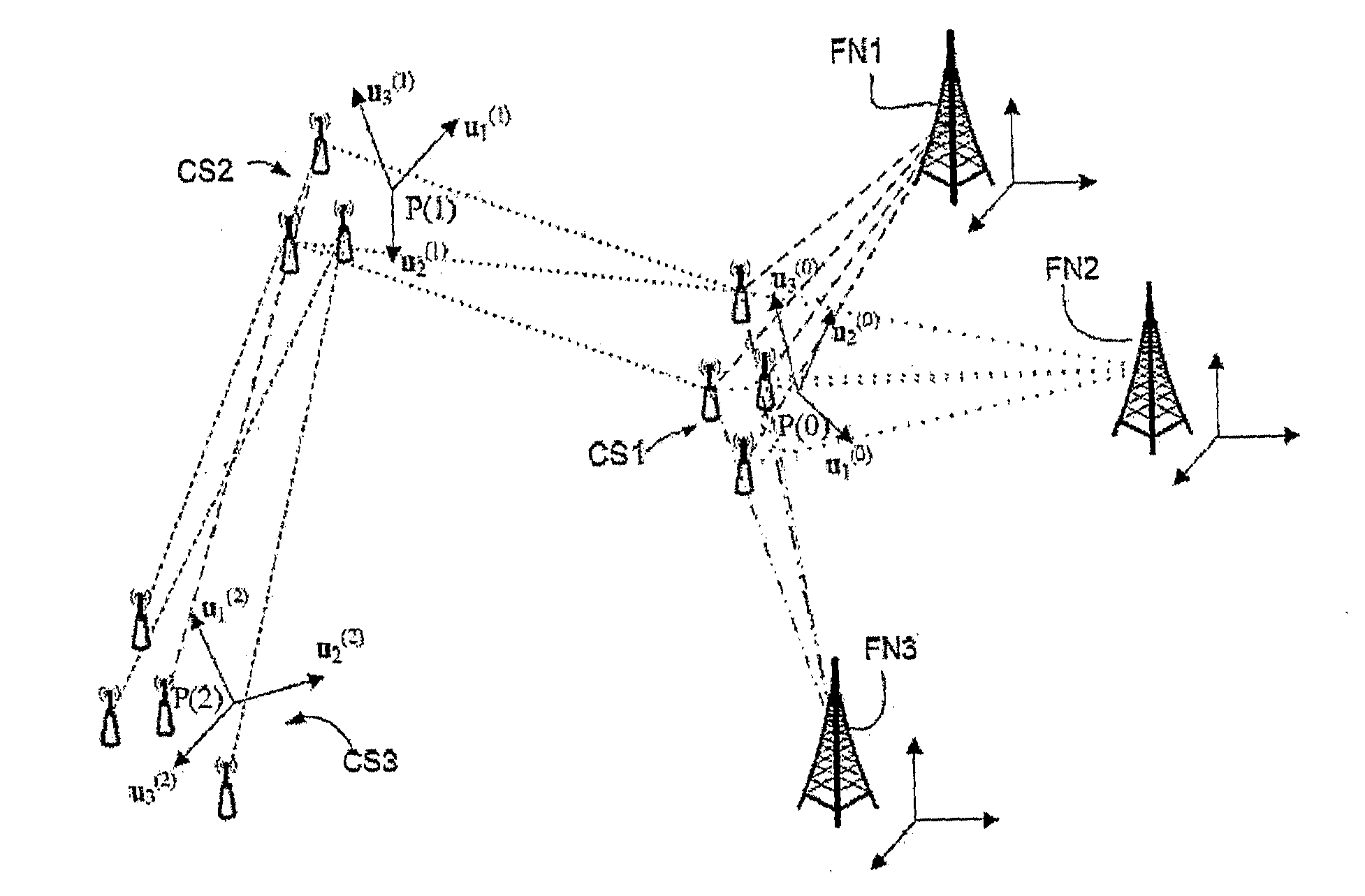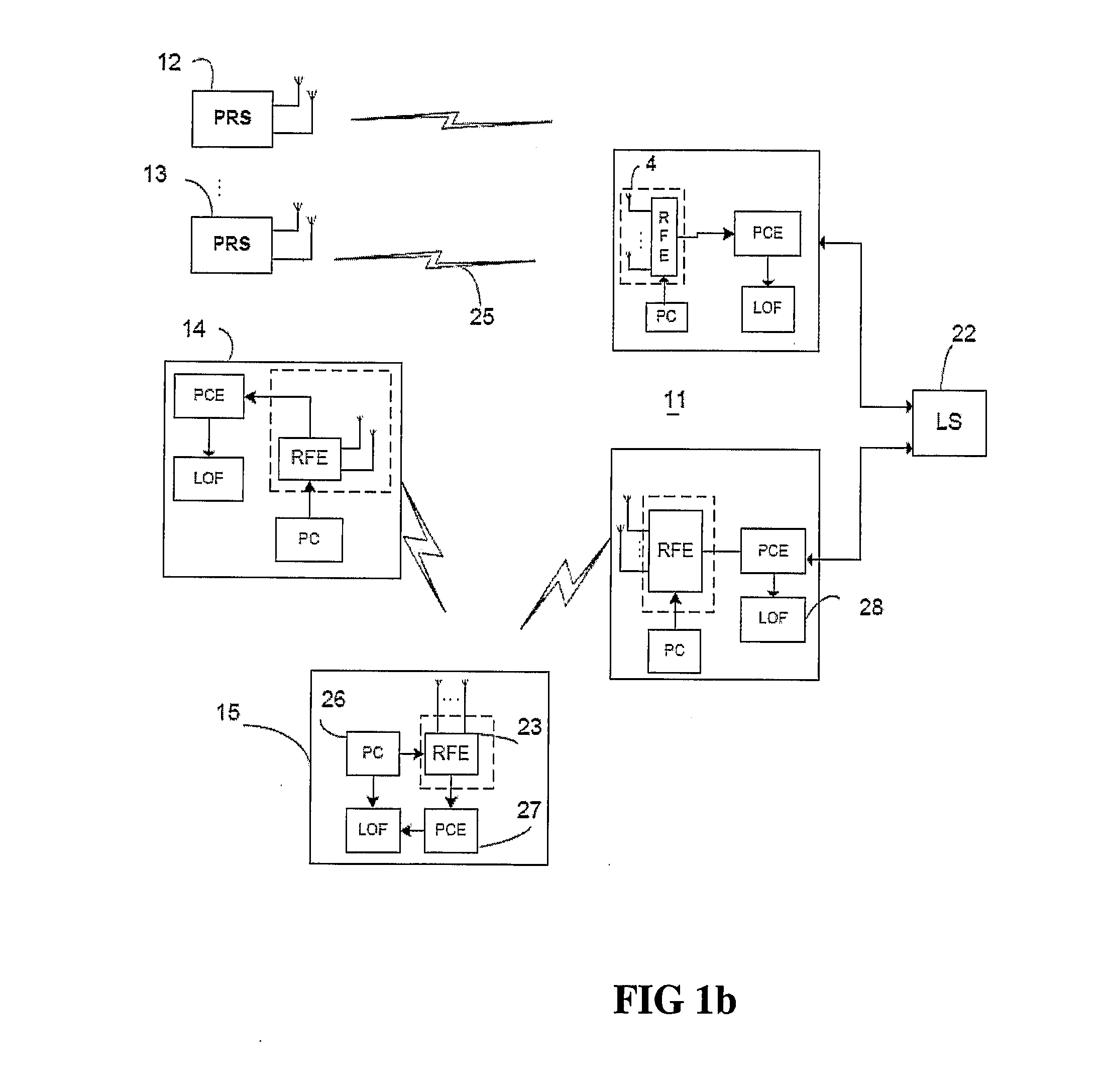Orientation and localization system
- Summary
- Abstract
- Description
- Claims
- Application Information
AI Technical Summary
Benefits of technology
Problems solved by technology
Method used
Image
Examples
Embodiment Construction
[0031]FIG. 1a is an example of location and orientation sub-system in which the combined spatial diversity and polarization diversity can be used. It comprises a lot of clusters of sensors CS1, CS2, CS3 . . . and a lot of fixed nodes FN1, FN2, FN3. The aim of the invention is to find the orientation and the localization of every node and cluster considered from any cluster or fixed nodes. In this FIG. 1a, reference systems u1(1)u2(1), u3(1), u1(2)u2(2), u3(2), u1(3)u2(3), u3(3) having respectively the origins P(0), P(1), P(2) . . . are allocated to clusters CS1, CS2, CS3 . . . . These reference systems can move relative to the reference system of the fixed nodes FN1, FN2, FN3, . . . .
[0032]FIG. 1b shows some details of the radio set incorporated in the mentioned clusters and fixed nodes. It comprises a set of orientation radio stations 11, 12, 13, 14 sharing location and orientation (LO) information through a location server (LS) 25. All said stations 11, 12, 13, 14 can have the sam...
PUM
 Login to View More
Login to View More Abstract
Description
Claims
Application Information
 Login to View More
Login to View More - R&D
- Intellectual Property
- Life Sciences
- Materials
- Tech Scout
- Unparalleled Data Quality
- Higher Quality Content
- 60% Fewer Hallucinations
Browse by: Latest US Patents, China's latest patents, Technical Efficacy Thesaurus, Application Domain, Technology Topic, Popular Technical Reports.
© 2025 PatSnap. All rights reserved.Legal|Privacy policy|Modern Slavery Act Transparency Statement|Sitemap|About US| Contact US: help@patsnap.com



